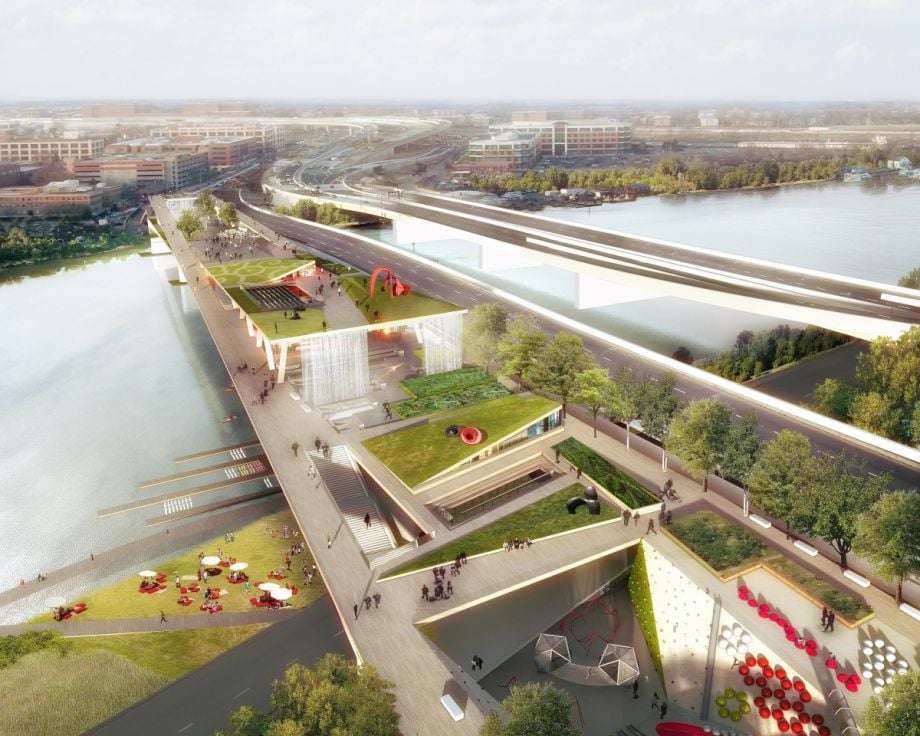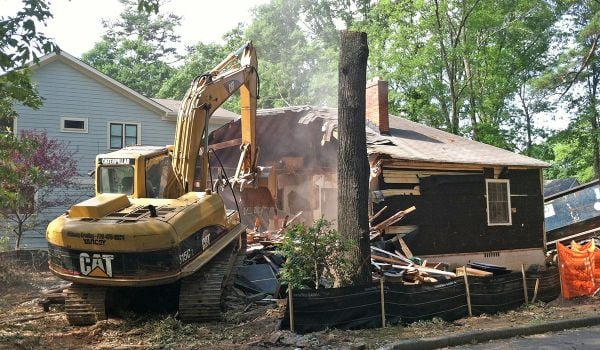As the director of Washington, D.C.’s 11th Street Bridge Park project, Scott Kratz has been paying close attention to how comparable placemaking efforts — many of which are aspiring to the meteoric success of New York’s High Line — are playing out nationwide. (One Next City writer dubbed the future elevated park as the “High Line on the Anacostia,” for the river at the site.)
During a visit to Los Angeles last summer, Kratz became aware of the effect the open space restoration project around the L.A. River was having on local real estate prices. In the Elysian Valley neighborhood — near where the Army Corps of Engineers’ billion-dollar plans were still just pending — median home values had risen 21 percent over the course of a year, versus 16 percent citywide.
“That was just shocking to me to see the quickness of how fast that happened,” says Kratz, “and how the city is really struggling to address it now that the speculation has already begun.”
Back in D.C., Kratz began to think about the really complicated ways the 11th Street Bridge Park might impact surrounding communities. The project, which is getting half of its construction money from D.C. and will launch a major capital campaign this year, spans two areas with very different economic realities: the tonier Ward 6 neighborhoods of Capitol Hill and the Navy Yard neighborhoods to the northwest and the Ward 8 neighborhoods of Anacostia and Fairlawn to the southeast.
“It’s really critical that we’re thinking presciently about how to ensure that the thousands of people who have helped shape this project can be the ones that benefit from it, while at the same time mitigating any potential displacement,” says Kratz. To that end, the organization has created an equitable development task force to guide programs and policies that might give residents to the southeast of the park the economic stability to stay in their neighborhood in the face of real estate pressures.
Members of 11th Street Bridge Park’s task force include representatives from the Urban Institute, LISC D.C., the Fiscal Policy Institute and the D.C. Office of Planning. The group has been collecting and analyzing data on existing conditions, brainstorming initial recommendations and meeting with community stakeholders to get their input. The three types of displacement the task force is focusing on are: affordable housing, workforce development and small business enterprises.
Last Friday, the task force met with groups from Ward 8, like the Fairlawn Civic Association, the Anacostia Coordinating Council and the Anacostia Economic Development Association to do a deep dive into their early recommendations.
“A lot of times people don’t really feel like the people who participate in [economic] changes are not really from the community,” says Amanda Stephenson, of the Anacostia Economic Development’s Small Business Development Center. She says that so far the focus of the task force has been to support and strengthen local businesses in both Ward 6 and Ward 8 and to “definitely make sure that the people who’ve been here are included and not forgotten, because that has been a problem in previous development projects.”
As for small business ideas on the table, Kratz mentions the idea of food stalls servicing the park acting as incubators for entrepreneurs.
With respect to workforce development, the task force is considering a partnership with the District of Columbia Water and Sewer Authority to do job training around the installation and maintenance of green building infrastructure.
“This [also] might be an opportunity for us to partner with the nearby Anacostia High School to collaborate with existing job training programs,” says Kratz. “If we’re spending the next two years doing pre-construction work, how do we make sure that when we’re ready to hire people to construct this new bridge park, that local residents have the capacity and training they need to take advantage of those jobs?”
The next steps on the task force’s timeline are to hold a series of public meetings this summer, finalize their program and policy recommendations this fall, and then begin implementation in November.
“It’s interesting, when we first started working on this four years ago, there was a big trust deficit — particularly in communities east of the river,” says Kratz, “because they’ve been promised a lot of things and many of those promises have not been kept.”
Stephenson confirms that trust building has been happening: “We definitely would have hoped that a lot of these things would have been considered in previous projects. But, I think the timing is right and the people involved are right.”
She and others are hopeful that this approach is just proactive enough to be inclusive as an economic development driver where others have failed. “I think that having brainstorming discussions involving all of the key players makes this, I feel, a winning [plan]. A lot of people have learned from the past and are expressing, ‘More involvement, more inclusion.’ I’m glad that at this time, we’re at a time where we can say, ‘Hey, we’ve made mistakes. Now let’s move forward.’”
The Equity Factor is made possible with the support of the Surdna Foundation.

Alexis Stephens was Next City’s 2014-2015 equitable cities fellow. She’s written about housing, pop culture, global music subcultures, and more for publications like Shelterforce, Rolling Stone, SPIN, and MTV Iggy. She has a B.A. in urban studies from Barnard College and an M.S. in historic preservation from the University of Pennsylvania.





_600_350_80_s_c1.jpg)











